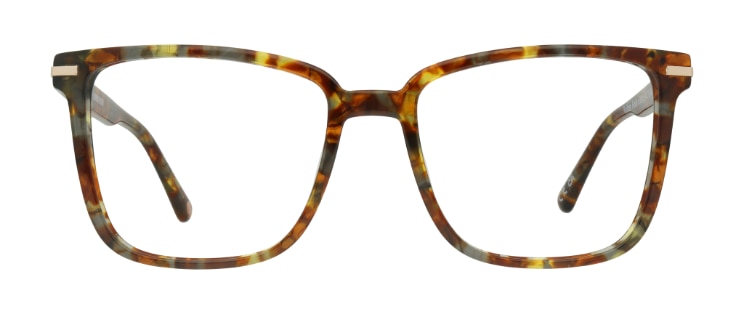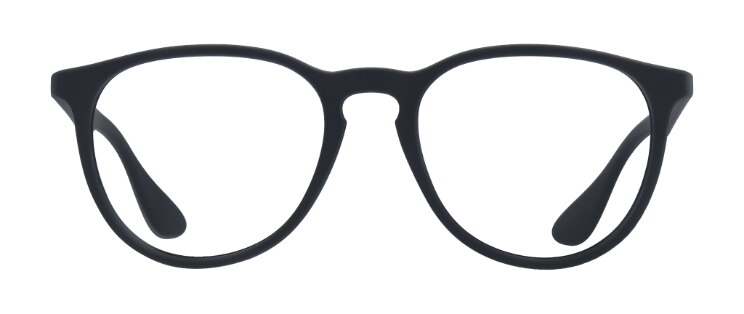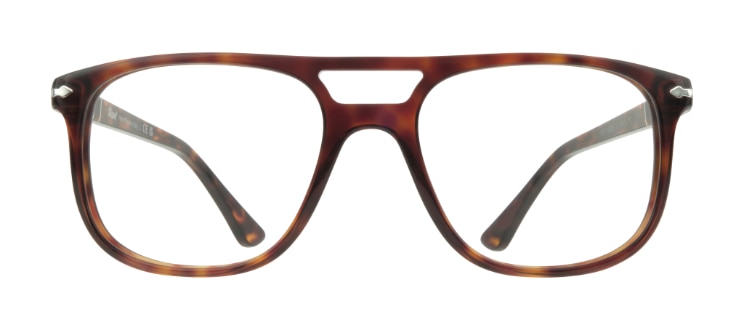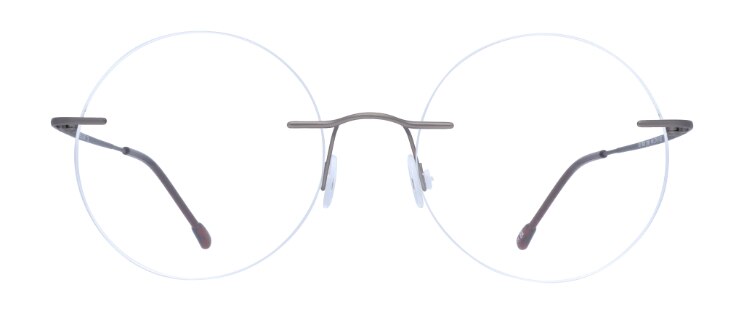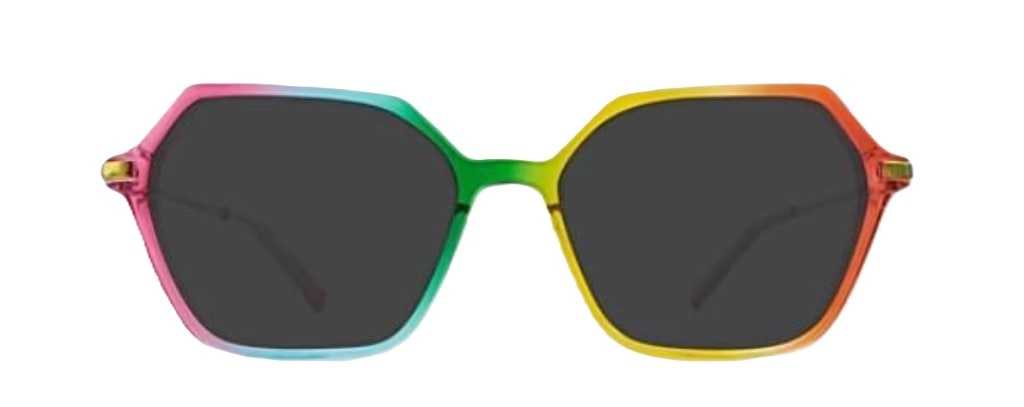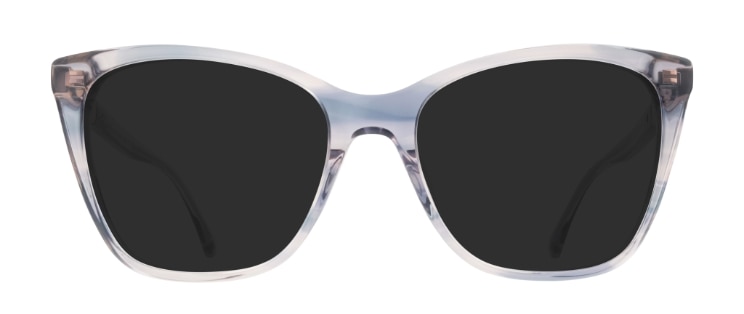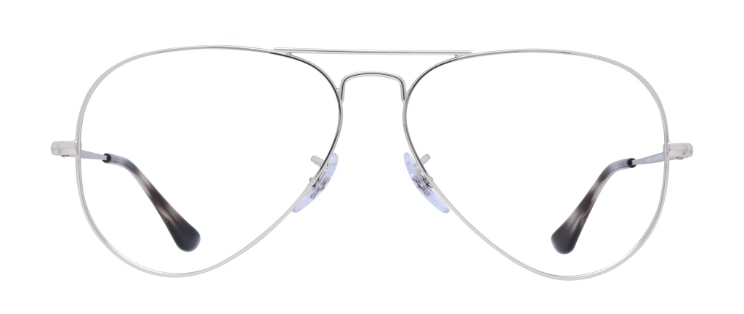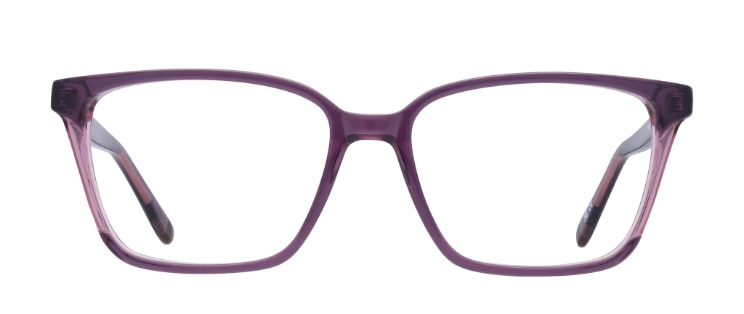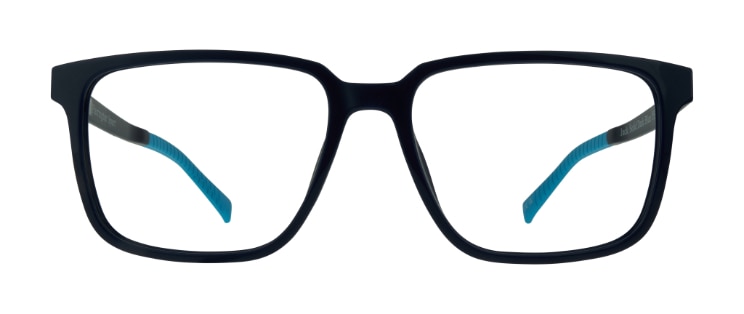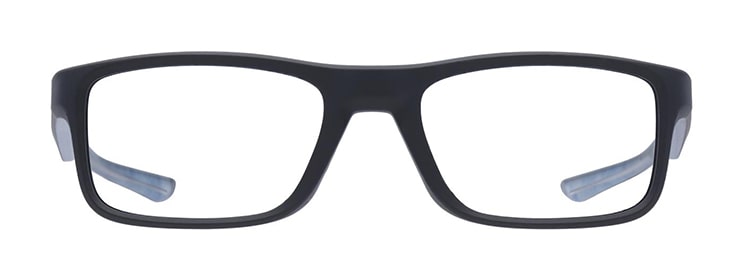Are you trying to find the best lenses for your new prescription glasses? When you invest in new eyewear, it’s important that the lenses are suitable and compatible with the frames you choose. Your glasses lenses have a critical job which is to correct your vision and if they’re not doing that properly, you’ll experience discomfort and could risk seriously impacting your eye health. To help you on your journey to finding the right prescription lenses for your glasses, this blog post explains some of the key features to consider when shopping for glasses online.
Types of lenses for your prescription glasses
The easiest way to decide what lens type is best for you is by referring to your most recent prescription. A majority of adults need to have their eyes tested at least every two years. If you’re shopping for new eyewear and your prescription is expiring soon, we recommend that you book an eye test with your local optician. An eye exam will not only guarantee that you have a new prescription that’s valid, but it can help to spot early signs of any eye problems or other health conditions. Using your prescription, you can decide which lens type is most suited to your needs.
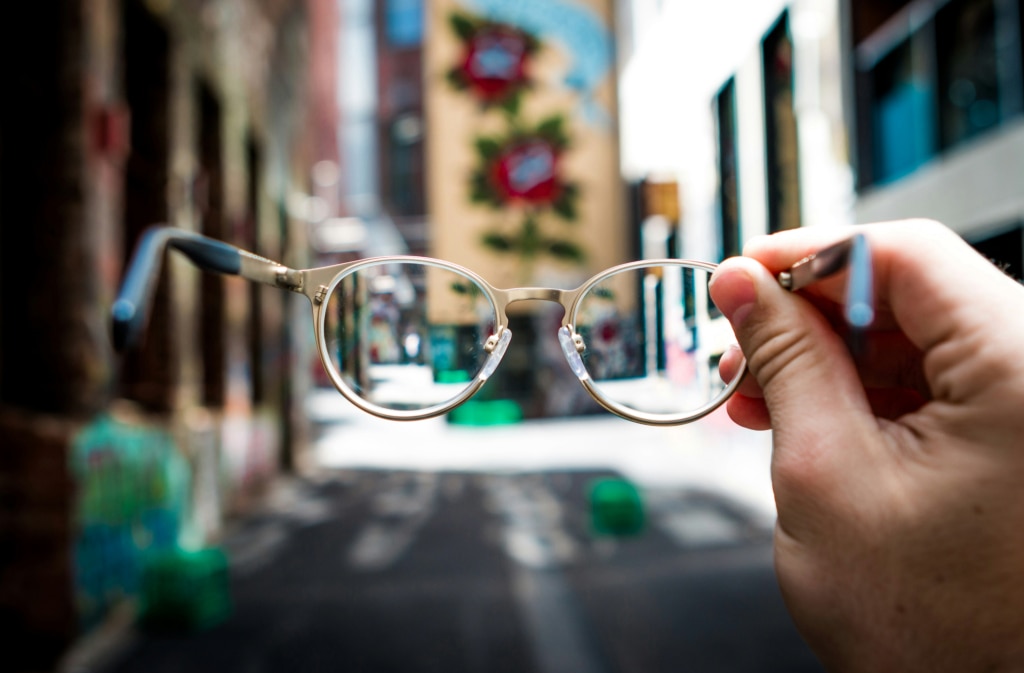
Single vision lenses
Featuring just one prescription, single-vision lenses correct either long (hyperopia) or short-sightedness (myopia). These lenses are ideal for daily tasks like reading, watching TV, computer use and driving.
We provide three types of lenses for single-vision wearers, including distance (driving), intermediate (computer use and anything an arm’s length away) and also near vision (for reading books and documents close up).
Varifocal lenses
Varifocals have more than a single prescription in one lens. They are used to correct presbyopia. The lenses offer a gradual, continuous view from distance to intermediate to near vision. They are popular among wearers who want the convenience of being able to see at all distances with just a single pair of glasses. Varifocal lenses can take a while to get used to, but most people adapt to them fairly quickly.
Bifocal Lenses
Bifocals feature two separate prescriptions, one for distance vision and the other for seeing things close up. There is a visible line separating the two segments. The main lens at the top is useful for activities like driving and the smaller segment at the bottom is most often used for reading.
Bifocal lenses are ideal if you spend a lot of time viewing two separate distances and want to avoid carrying two pairs of glasses around with you all the time. However, unlike varifocals which provide a smooth and continuous view, the lens power changes very quickly when you look from the top of the lens to the bottom. Some wearers find this unsettling and it can mean that obstacles below your line of sight, such as stairs and kerbs, are hard to see or look blurry.

Other lens options
Aside from the traditional vision types, you may also want other kinds of eyewear depending on your vision needs and what you want to use your eyewear for.
Prescription sunglasses
We have three sunglasses lens options which all feature 100% UVA/B protection. Dark tints are the most common type of sunglasses. They protect your eyes from bright sunlight and are ideal for everyday wear.
As for gradient tints, they are dark at the top and fade to clear at the bottom. They are particularly suitable for daytime driving because the highest point of the lens protects you from strong sunlight overhead. Meanwhile, the lower section allows you to see and navigate your dashboard controls more easily in the darker area of the car below the windscreen.
Polarised sunglasses block glare from surfaces that reflect light (such as, water, snow, metal and glass) so you can see clearly without having to strain your eyes. They enhance contrast for improved visual clarity. Polarised lenses can be used for everyday wear, outdoor sports and driving.
It’s worth noting, some wearers prefer non-prescription sunglasses which can be worn with contact lenses.
Light-adaptive lenses
Photochromic lenses, also known as transition lenses, adapt to the light around them. They transform from a pair of fully clear glasses indoors to a practical pair of sunglasses when you go outside. It means you don’t have to carry both your glasses and sunglasses around with you anywhere you go. All of our transition lenses block 100% UVA/B rays when exposed to bright sunlight.
Our most basic light-adaptive lenses are great value and ideal for daily wear. Transitions® GEN S™ lenses, meanwhile, are fast reacting and come in eight different style colours.
Transitions® XTRActive® are ideal for wearers with eye conditions that mean they are sensitive to light as the lenses go extra dark outside. They are great for use indoors and outdoors, as well as in the car.
As for Transitions® Drivewear® lenses, they’re specially designed for driving. These lenses minimise reflected glare and give you clear vision, preventing issues related to rapidly changing light. They function in all conditions whether it’s overcast or a bright day. Transitions® Drivewear® enable you to see clearly and help you stay safe on the road. They’re always tinted but the colour of the lens adapts according to the amount of light there is.
Blue light lenses
These lenses filter blue-violet light. Blue-violet light lenses also reduce glare and provide a more comfortable visual experience when you’re using your digital devices.
What lens coatings are worth it?
Once you decide which type of lenses are best for your glasses or sunglasses, you can then consider what lens coatings you’ll need. Of course, this will depend on your lifestyle and what you’ll be using your new glasses for. All our glasses are available with free standard single-vision lenses, however, these have no protective coatings included. For this reason, we recommend that you try one of our great-value, high-quality lens packages which come in various thicknesses and are suited to different prescription strengths. They have special features that protect your new lenses, including:
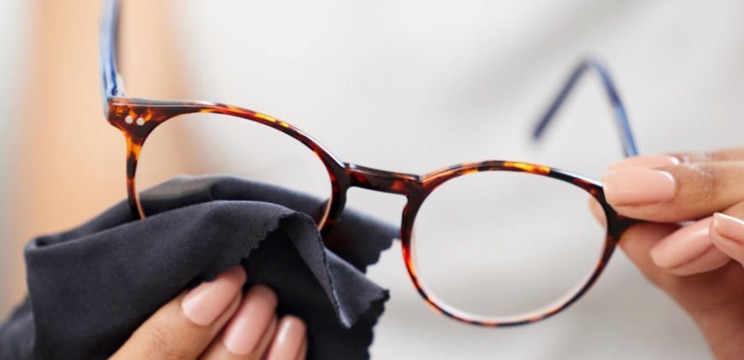
Scratch resistance protects your lenses from small abrasions, like when you use an item of clothing or a tissue instead of an actual glasses cleaning cloth to wipe your lenses. This coating is available with all packages, including LensProtect+.

Anti-reflection reduces glare and annoying reflections. An anti-reflection coating is ideal when driving at night as it minimises the distracting glare reflected from vehicle headlights. It will also keep you protected when using your electronic devices like your mobile, computer, or tablet. This coating is included with all packages Silver upwards.

UV protection can help prevent long-term damage to your eyes. Some of our packages come with a built-in UV400 coating. This blocks harmful UVA/B rays from the sun. An anti-UV coating comes included with all packages Gold upwards, excluding KODAK Lens Silver+.
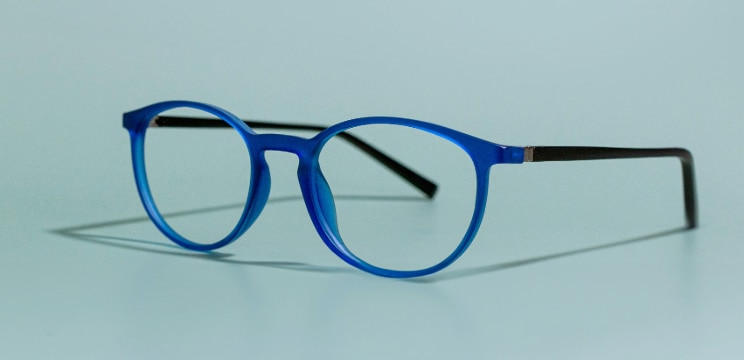
The following are all features of the KODAK Clean&CleAR Lens packages:
Anti-static helps keep away dust and dirt.
Easy-to-clean lenses naturally repel dirt, dust and cosmetics.
Water repellence makes it harder for water to get through to the material and damage it.
Our advice on lens thickness
The thickness of your lenses will depend on how strong your prescription is. Lens materials are categorised by their refractive index. Put simply, 1.5 index is the thickest and 1.74 is the thinnest. The higher your prescription, the higher the number for the lens index should be. This will ensure that your lenses are as attractive and comfortable as they can be. Similarly, the lower your prescription, the lower the index number necessary for the lenses to look and feel good.
If you have a strong prescription and are short-sighted, you’ll require thin lenses as the thickness at the edges will be more noticeable. The same can be said if you’re long-sighted. However, in this case, thinner, flatter lenses will minimise the size in the middle of the lens. This will make sure your glasses are aesthetically pleasing and will also stop them from feeling too heavy.

Best frames for single-vision wearers
To find the most suitable new frames for single-vision lenses, you’ll need to consider the strength of your prescription.
It’s important to be aware that if you have a strong prescription and decide not to add one of our reliable lens packages then you will need to think carefully about what style of frame you go for in order to reduce how thick your frames appear. We’d advice choosing plastic frames over metal as they tend to have chunkier rims. Also, try to avoid semi-rimless and rimless frames as the thickness of your lenses will be more noticeable. Take a look at the examples below for an idea of what to go for.
Ideal frames for multifocal lenses
When it comes to choosing a frame for your bifocal or varifocal lenses, keep in mind that you’ll need a suitable frame size to accommodate the various sections of the lens. To enjoy full visual clarity, whether you are driving your car or reading a book, the height of the lens should be at least 30 millimetres. Take a look at our guide to choosing the perfect varifocal glasses for more inspiration.
Rimless frames have an understated style that is ideal for multifocal lenses. They are popular among wearers who find traditional full-rim glasses uncomfortable. With no rims around the lenses, you’ll be able to see your surroundings clearly. For the same reason, durable metal frames, which tend to have very sleek rims, are also a popular choice. Acetate frames, meanwhile, offer a contemporary alternative for those who want to add a modern edge to their look. Take a look at the styles we have chosen which make ideal bifocal or varifocal glasses.
Frames that work well as sunglasses
All our frames work really well as sunglasses. Although, we do recommend frames that are slightly larger. Larger oversized frames have space to accommodate bigger lenses which will keep your eyes fully covered and protected from the sun.
Just be aware, that semi-rimless and rimless frames are not suitable for polarised sunglasses due to the risk of de-lamination.
Suitable frames for light-adaptive lenses
Our range of photochromic lenses suit a variety of frame shapes and sizes. Once again, it’s totally down to your personal preferences and the purpose of your new eyewear.
If you intend to use your new light-adaptive lenses for driving, we recommend a reasonably large frame so that you have a good field of view. Frames with thinner temples are also ideal as they’re less likely to obscure the corners of your vision. Pilot-style frames are a very popular style for driving.
For those of you who want to play around with your style, our Transitions® GEN S™ lenses come in eight funky style colours so you can match the colour of your frame to your lenses. Juniper from our eco-friendly Arden collection pairs beautifully with amethyst lenses.
Most reliable frames for blue-light lenses
Do you plan to use your new glasses at the office? Or are you in need of a pair of gaming glasses? If so, you’ll ideally need a frame that offers maximum comfort, especially if you spend extended time in front of digital screens. Sports glasses are ideal for gamers as they’re designed to fit securely and so will be less likely to slip off your face during long gaming session. Sports glasses are also ideal for office workers and those who work from digital devices for extended periods.
How do I find frames that fit and suit my style?
We have a selection of frame sizes to choose from. Ideally, your frames should not sit above your eyebrows and should align horizontally with your eyes. Use your current prescription to find the distance between the centre of your pupils, known as your pupillary distance (PD). An accurate measurement will ensure your lenses are aligned correctly, preventing peripheral distortion for a comfortable visual experience.
You can also enter your current frame measurements into our Best Fit Machine to find new glasses that fit just as well as your existing frames do. For frames that suit your unique style, check out our face shape guide.


